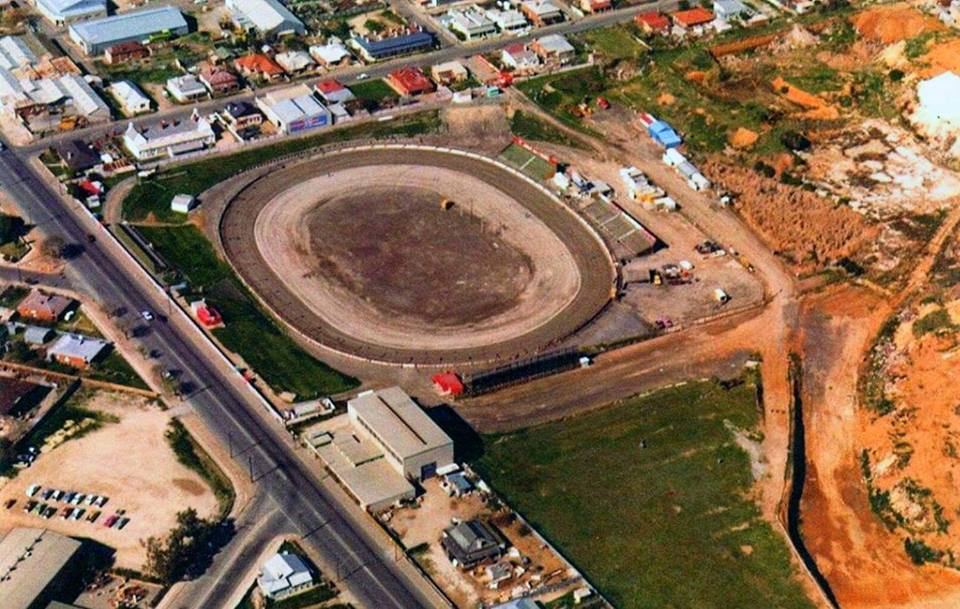
The History of Rowley Park Speedway: South Australia’s Iconic Track
Rowley Park Speedway, located in Brompton, South Australia, was one of Australia’s most beloved speedway tracks. It operated for three decades, from its opening in 1949 until its final race in 1979, leaving behind a legacy cherished by fans and racers alike. Known for its thrilling races and strong community spirit, Rowley Park became a cultural icon, drawing crowds every Friday night to witness high-speed competition and enjoy the camaraderie of motorsport.
Origins and Early Years
In the late 1940s, Adelaide’s motorsport enthusiasts sought a dedicated speedway facility to host regular events. The site in Brompton was chosen for its proximity to Adelaide’s city center and its accessible location. Rowley Park officially opened in December 1949, quickly establishing itself as a prime venue for motorcycle and car racing. The track initially attracted local talent, but its reputation soon grew, drawing top drivers from across Australia and, eventually, international racers.
Rowley Park’s layout was designed to provide a challenging yet exciting experience for racers. The oval dirt track, about a quarter-mile in length, was perfectly suited to the high-adrenaline nature of speedway racing. With limited barriers and a compact infield, fans could get remarkably close to the action, making every race an immersive experience.
Golden Era: The 1950s to 1970s
Rowley Park’s popularity soared during the 1950s and 1960s. Crowds flocked to the track every Friday night to witness events across various categories, including speedcars (known in the U.S. as midgets), motorcycles, and sidecars. Rowley Park’s events were renowned for their intensity and unpredictability, with competitors often racing under the lights in front of packed grandstands.
Throughout its golden years, Rowley Park hosted many celebrated races and legendary drivers. Names like Doug Chivas, Garry Rush, and Australian legends of speedway etched their marks on Rowley Park’s dirt. International drivers from the UK, New Zealand, and the U.S. also visited, enhancing the track’s prestige and elevating its status on the global speedway circuit.
The atmosphere was electric, with the smell of burning rubber and the roar of engines filling the air. The Speedway Riders Association of South Australia played a key role in organizing events and ensuring the track’s success. Fans developed a strong loyalty to the track and their favorite drivers, creating a community that extended beyond race nights. Families and friends gathered weekly, and Rowley Park became a place where lifelong memories were made.
Tragedy and the Human Cost
While Rowley Park was a place of joy and excitement, it also bore the darker side of motorsport. Racing at high speeds on a dirt track came with significant risks, and over the years, several tragic accidents occurred. Drivers like Brian Bennett, Arn Sunstrom, and others lost their lives, reminding the community of the dangers inherent in the sport. These tragedies cast a shadow over Rowley Park but also reinforced the bravery and dedication of those who raced there.
The Decline and Closure
By the late 1970s, however, Rowley Park Speedway was beginning to feel the pressure of changing times. Residential development around Brompton was increasing, and noise complaints from the surrounding community became more common. The physical limitations of the track, which had remained largely unchanged since its inception, started to hinder the safety and logistics of modern racing.
Additionally, the evolution of motorsport technology made Rowley Park’s facilities appear outdated. Modern speedway tracks were being developed with improved amenities, safety features, and larger spectator areas. For Rowley Park, expanding or upgrading was challenging due to its urban location and limited space. By 1979, it was clear that the track’s days were numbered.
On April 6, 1979, Rowley Park hosted its final race night. The event was both a celebration of the track’s storied history and a bittersweet farewell. Fans packed the stands for one last time to honor a venue that had given them so much. Emotions ran high as drivers took to the dirt track for the last laps, marking the end of an era for South Australian motorsport.
Legacy of Rowley Park Speedway
Despite its closure, Rowley Park’s impact on the motorsport community endures. It holds a special place in the hearts of those who attended its races, and its legacy lives on through the memories of fans and drivers. In the years since its closure, the site has been redeveloped, but the stories of Rowley Park continue to be shared by those who remember its thrilling Friday night events.
Today, Rowley Park Speedway is remembered as an iconic chapter in Australian motorsport history. The track may be gone, but its spirit lives on in South Australia’s racing community, inspiring future generations of speedway fans and racers. From the unforgettable races to the friendships formed, Rowley Park Speedway remains an enduring symbol of South Australia’s passion for speedway racing, and its memory is cherished by all who experienced its magic.

You May Also Like

What’s the state of Speedway in South Australia
October 19, 2024
Rowley Park Speedway 45-Year Reunion
April 8, 2024